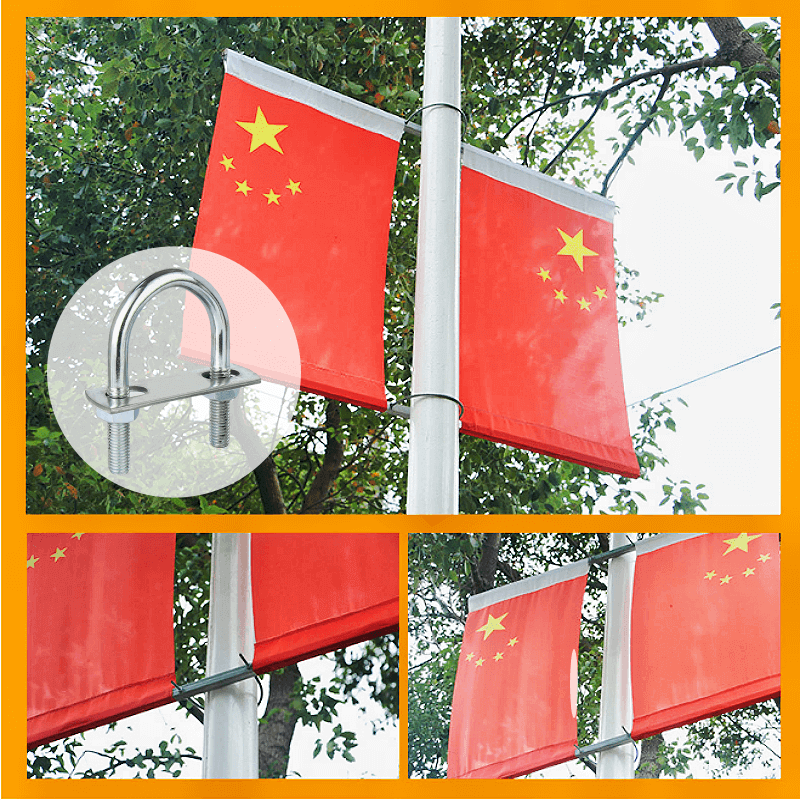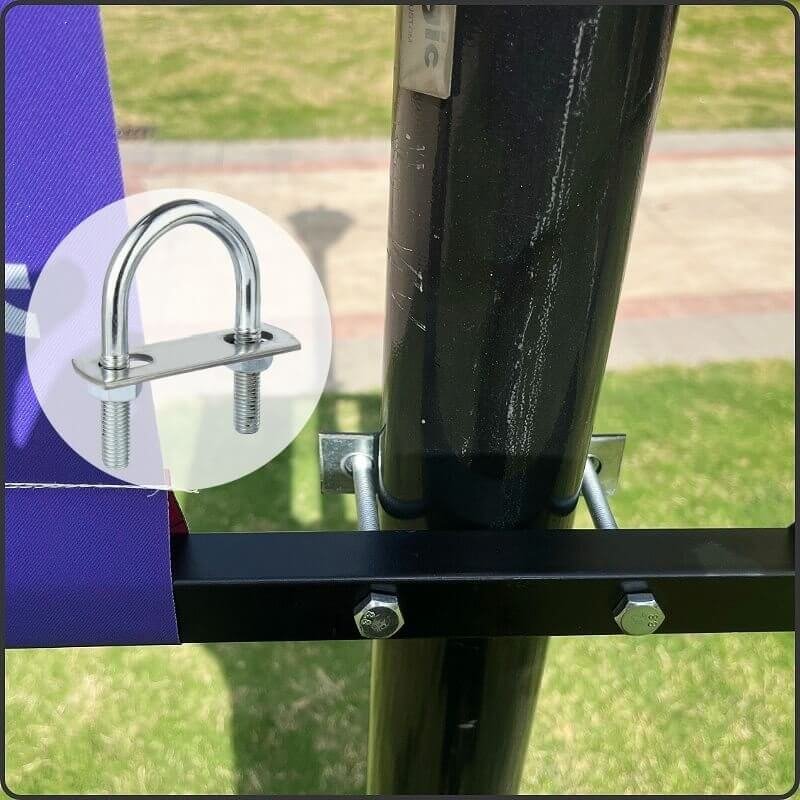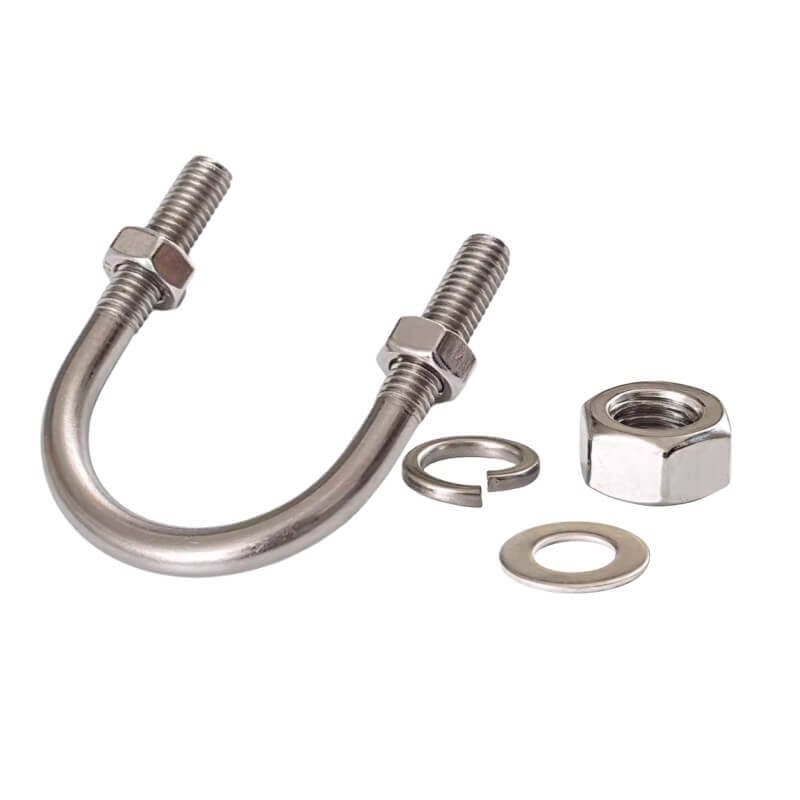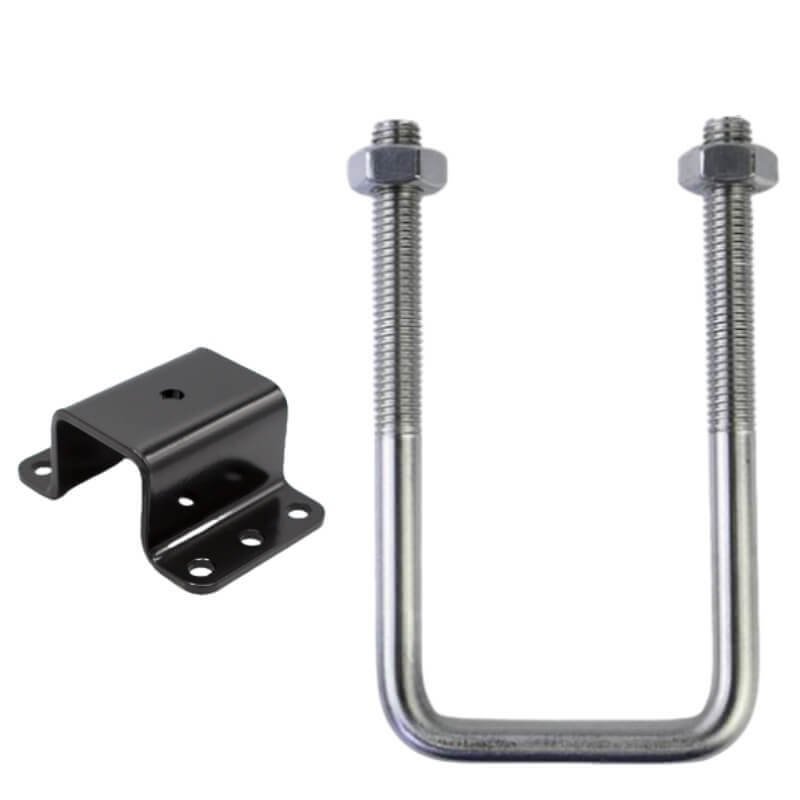
Surface Treatment of U-shaped Bolts
There are various surface treatment methods for U-bolts, each with its specific application scenarios and advantages.
Here are some common surface treatment methods for U-bolts:
Galvanizing process:
Hot dip galvanizing:
U-bolts are immersed in molten zinc and then subjected to heating treatment to form a metallurgical bond between the zinc layer and the surface of the bolt.
This processing method has better anti-corrosion performance and is suitable for harsh environmental conditions.
Electrogalvanizing is the most common surface treatment method and process technology in the production and manufacturing of fastener products.
Electroplated zinc coating is a typical anodic coating, mainly used to improve the corrosion resistance of the substrate.
After chromate passivation treatment, its anti-corrosion performance is greatly improved.
The excellent electroplated zinc layer can be used for outdoor protection in neutral environments,
but its anti-corrosion performance is poor in harsh industrial atmospheres and coastal climates.
Electrogalvanizing has low cost, stable and reliable process, and is convenient to use, but it is prone to hydrogen embrittlement.
Therefore, hydrogen removal treatment should be carried out in a timely manner after electroplating.
In addition, it has poor acid and alkali resistance, short anti-corrosion time, and low environmental friendliness of the process.

Powder Zinc Immersion:
A surface treatment process that uses a zinc dipping agent as the zinc source, and through heating,
generates interdiffusion of zinc and iron atoms to form a zinc dipping layer (zinc iron alloy layer) on the surface of steel.
The powder zinc coating is not an external coating, but an organic combination of the base metal and the coating, with a very strong bond.
The hardness and corrosion resistance of powder zinc infiltration layer are much better than those of electroplated zinc layer,
and the infiltration layer is uniform, without ammonia embrittlement and almost no deformation,
especially suitable for fasteners such as bolts and workpieces with complex shapes.
Mechanical galvanizing:
A surface treatment process in which a galvanized layer is formed on the surface of a steel
component by impacting it with an impact medium (such as glass balls) in the presence of zinc powder, dispersants, accelerators, liquid media (usually water), and other substances.
Mechanical galvanizing layer is a type of anti-corrosion coating formed by a completely different process from electroplating and hot-dip galvanizing.
The process characteristic lies in the production operation under room temperature conditions.
By rotating the plating cylinder of the loaded parts, the impact medium inside the cylinder generates mechanical impact force with the rotation of the drum and the collision of the parts,
causing zinc powder to collide and deposit on the surface of the parts, thereby forming a coating with the basic physical characteristics of metallic zinc.
The mechanical galvanizing process does not cause hydrogen embrittlement hazards to high-strength steel,
but the thickness of the zinc layer is uneven and not as smooth and bright as the electroplating layer.
Nickel plating:
Immerse the U-bolt in a solution containing nickel ions to cover its surface with a layer of nickel.
This processing method can improve the corrosion resistance and wear resistance of bolts,
making it suitable for applications that require high strength and high corrosion resistance.

Chromium plating:
Immerse the U-bolt in a solution containing chromium ions to cover its surface with a layer of chromium.
This processing method can not only improve the corrosion resistance and wear resistance of bolts, but also increase the surface glossiness of bolts.
Blackening:
Immerse the U-bolt in a solution containing an oxidizing agent to form a black oxide film on its surface.
This processing method can improve the corrosion resistance and wear resistance of bolts, and is suitable for general industrial applications.
When the appearance requirements are not high, blackening treatment can be used.
Coating:
Apply coating (colored coating or Dacromet) on the surface of the U-bolt as needed to achieve good heat resistance, corrosion resistance, and friction reduction properties.
Surface Treatment of U-shaped Bolts,There are various surface treatment methods for U-bolts, each with its specific application scenarios and advantages.
Phosphating:
A process in which a chemical and electrochemical reaction forms a phosphate chemical conversion film,
and the resulting phosphate conversion film is called a phosphating film.
Phosphating can provide a protective film for U-bolts, which to some extent prevents metal corrosion and improves adhesion and corrosion resistance.
In summary, there are various surface treatment methods for U-bolts,
and selecting the appropriate surface treatment method requires consideration of factors such as the bolt’s usage environment,
load requirements, and appearance requirements. Meanwhile, the surface treatment method can also affect the cost of bolts,
and a balance needs to be struck between performance and cost.
Among the various surface treatment methods for U-bolts, determining which one is the cheapest is not a simple task,
as it involves multiple factors such as treatment process, material cost, production efficiency, etc.
However, I can provide some rough estimates and comparisons based on general market conditions and experience.

Blackening treatment:
Blackening treatment is a relatively simple surface treatment method that mainly forms an oxide film on the metal surface through chemical reactions.
Due to its simple process and low material cost, blackening treatment is usually cheaper in price.
Galvanizing treatment:
Galvanizing treatment, especially hot-dip galvanizing, requires higher temperatures and specialized equipment, resulting in relatively higher costs.
Although electroplating zinc has a lower cost, it is still more expensive than blackening treatment.
Nickel plating and chrome plating treatment:
Nickel plating and chrome plating typically require more complex processes and higher material costs.
These processing methods not only involve electrolytic deposition of metal ions, but may also require subsequent processing steps such as polishing and passivation.
Phosphating treatment:
Phosphating treatment has a moderate cost and improves the corrosion resistance of metals by forming a layer of phosphate conversion film on the metal surface.
The price of phosphating treatment is usually between blackening treatment and galvanizing treatment.
Painting:
The price of painting depends on the type of paint used and the painting process.
Generally speaking, simple coating treatment may be slightly more expensive than blackening treatment, but far lower than methods such as galvanizing, nickel plating, and chrome plating.
In summary, from the general market situation, blackening treatment may be the cheapest among these surface treatment methods.
However, this does not mean that it is the case in all cases, as prices are also influenced by various factors such as specific processes,
production efficiency, material costs, and market supply and demand relationships.
Therefore, when choosing the surface treatment method for U-bolts, in addition to considering price factors,
other factors such as corrosion resistance, wear resistance, and appearance requirements need to be comprehensively considered.
Surface Treatment of U-shaped Bolts,There are various surface treatment methods for U-bolts, each with its specific application scenarios and advantages.
